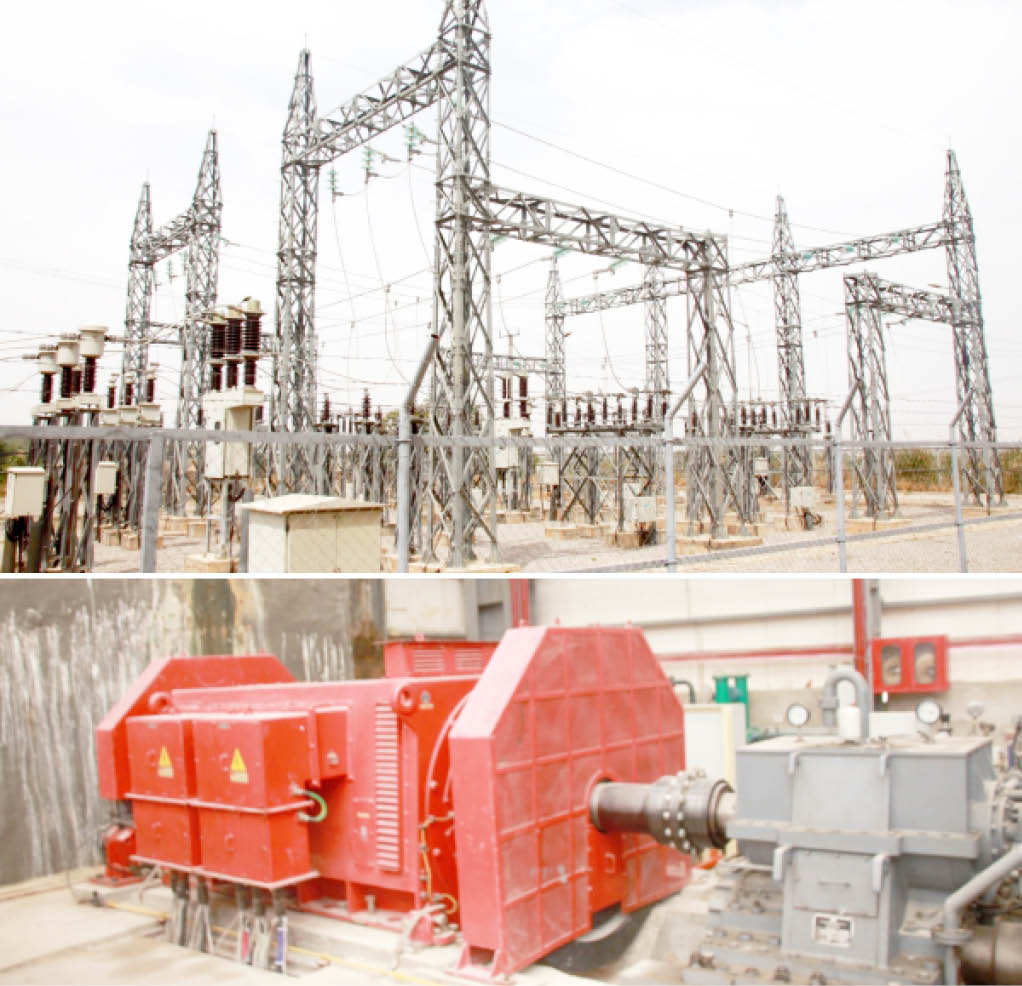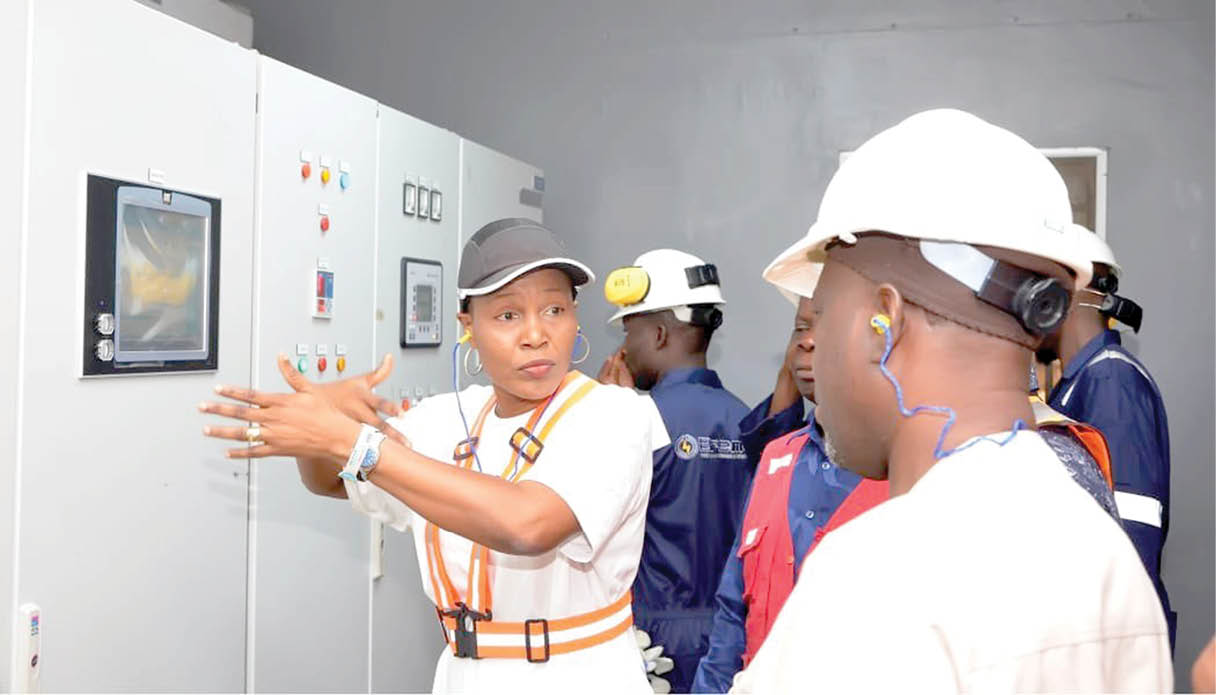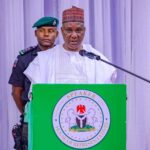Erratic electricity supply and frequent power cuts are partly responsible for the sluggish growth of Nigeria’s economy, Daily Trust on Sunday can report.
Abiodun Alade (Lagos), Salim Umar Ibrahim (Kano), Iniabasi Umo (Uyo), Usman A. Bello (Benin) & Eyo Charles (Calabar)
Despite boasting of 28 private and government-owned power generation plants, Nigeria has a low power generation, transmission and distribution capacity of about 5,625MW, 8,500MW, and 8,425MW respectively, which are said to be inadequate to achieve industrial revolution in the country.
This has compelled millions of households and businesses to rely on generators to power their homes and businesses, putting pressure on their meagre salaries and profits as fuel prices have tripled since the petrol subsidy was removed by President Bola Tinubu in May.
The Energy Commission of Nigeria has estimated that individuals and businesses spend $22 billion annually to fuel generators. It is said that the collective capacity of the 22 million generators in Nigeria (~42 GW) is eight times the capacity of the national grid (~5.4 GW).
The Nigerian Electricity Regulatory Commission, in its 2022 Electricity Market Competition Report, observed that Nigeria’s available power generation capacity plunged by 2,324 megawatts due to deteriorating plants/units’ capacities and poor maintenance caused by liquidity challenges, among others.
Why I cannot live in Nigeria again – Dr Patrick Wilmot, former ABU don
Need for judicial transparency in the interpretation of the law
“The installed capacity in NESI (Nigeria Electricity Supply Industry) grew by 7.95 per cent, from 12,132MW as of December 2015 to 13,097MW as at December 2022.
“During the same period, however, the average available capacity decreased by 2,324MW, from 6,401MW recorded in 2015 to 4,059MW in 2022.
“This is due to deteriorating plants/units’ capacities, poor maintenance due to liquidity challenge and access to forex (foreign exchange), non-binding contracts and delay payment, and introduction of stringent regulatory measures against wrong declaration,” it said.
In this second part on the state of power plants in the country, Daily Trust on Sunday observes that the situation in Kano and southern Nigeria are not different from the sorry state reported in northern Nigeria in the first part of the series as power plants continue to perform below their capacities despite the huge investment made by the governments (federal and states).
For instance, these eight plants – Calabar (563MW), Omotosho (500 MW), Sapele (450 MW), Alaoji (960 MW), Ihovbor (450 MW), Gbarain (225 MW), Geregu (434 MW) and Olorunsogo (675 MW) have a total contract capacity of 4,257 MW and tested capacity of 1,762 MW. However, data from the Nigerian Bulk Electricity Trading PLC (NBET) showed an average generation of these plants is a paltry 11% of net contract capacity and about 27% of tested capacity as at 2021.

10 years after, Kano’s 10mw hydro power plant dallies
Ten years after the commencement of the construction of the 10 megawatts independent power plant by the Kano state government, the project, which has become the darling of subsequent administrations, is yet to commence full operation.
In a recent visit to the facility located at Tiga Dam, findings revealed that the power plant had been fully installed and is currently undergoing tests of the different machines in the facility.
From the engine room to the tunnels up to the control room, the entire aspect, made up the power plant, has been completed.
The idea of the Tiga Independent Power Plant project, managed by the Kano Hydro and Energy Development Company (KHEDCO), was conceived in 2002 during the first tenure of former Governor Rabiu Musa Kwankwaso.
It was, however, stagnated until his second tenure in 2013 when another independent power project, situated at the Challawa Gorge Dam, was also conceived. Both were initially expected to generate 35 megawatts of electricity at the cost of N14 billion.
Daily Trust on Sunday reports that former Governor Abdullahi Umar Ganduje-led administration was said to have reviewed the proposed megawatts from 35 to 13.2 following pressure to save the federal government’s irrigation projects at the dams.
Although at the foundation laying of the power plants, Kwankwaso said they would be financed without any loan, Daily Trust on Sunday reports that in 2017, Ganduje announced that the state government took a N10bn soft loan from the Central Bank of Nigeria (CBN) to enable it to complete the projects in September 2017. Yet it was not completed.
The projects suffered many delays in 2018 and 2019 despite the governor’s promises to deliver them.
In October 2020, the KHEDCO announced that the construction work on the Tiga Hydroelectric Power Station had reached 95 per cent completion.
In 2022, the state government announced the completion of the 10 MW HydroPower Station, adding that it was awaiting certification from the Nigerian Electricity Management Services Agency (NEMSA). However, months later, the project is yet to be put to use.
The project, when it comes into operation, is expected to provide job opportunities for youths as well as boost small scale businesses in the commercial city.
Power generated from the station is expected to be used for the State’s Tamburawa Water Treatment Plant, ensuring the availability of clean drinking water in the state, thus reducing water-borne diseases; as well as to power streetlights in the region.
Water supply is a luxury in many parts of Kano state forcing the close to 15 million residents across the 44 LGAs of the state to seek alternative means including wells, boreholes, truck pushers, rivers and streams which are not always hygienic.
According to official data, between 2003 and 2008, the state government spent over $58m to construct the 150m-litre capacity water treatment plant in Tamburawa and another 180m-litre daily capacity plant in Challawa.
However, Governor Abba Kabir Yusuf-led administration recently got the approval of the Kano State House of Assembly to access a loan of N4 billion from CBN for the completion of the Tiga and Challawa Hydro-electric power project.
The loan was approved a few days after the House passed the N58 billion 2023 supplementary budget.
The Managing Director, KHEDCO, Ado Ibrahim Umar, refused to comment on the projects after keeping our reporters waiting in his office for hours.
Ibom Power Plant underutilized
Ibom Power Plant, which is owned and operated by the Akwa Ibom State Government, is said to be under-utilised because it cannot distribute the power it is generating without sending it to the National grid for onward distribution across the country.
According to the Manager, Ibom Power Plant, Mr Aniefiok Sunday, the plant has been operating in the past 10 years without any fatality.
“We have been running Ibom Power plant for the past 10 years without any fatality. The main challenge that we have in operations is the transmission line.
“Most times, several trips that we have are through transmission lines, either the Alogi line cut conductor by Itu line or Uyo-Itu. Each trip that we have is equivalent to 10 normal shut down and this is affecting our unit.
“The second challenge is the distribution because we are on high landing mode operations. We discover that maybe in this state, we take out 90 megawatts but what the distribution would be taking is maximum 24 watts, and anything below 70 megawatts has an effect on the turbine hardwares.
“We have made some reports on that several times but there is no response to that effect. Another challenge is the gas take up contract, whether we are taking the gas or not, we are still paying,” he stated.
To tackle this problem, the Akwa Ibom State Government applied for and got an electricity distribution licence, known as Ibom Utility company, from the Nigerian Electricity Regulatory Commission (NERC).
The licence would enable Ibom Utility company to operate as an independent electricity distribution network to distribute electricity in selected locations in the state.
NERC also approved the application for an amendment of the on-grid electricity generating licence to enable Ibom Power Company Ltd embed into the distribution network of Ibom Utility Company Limited.
During Governor Umo Eno’s recent familiarisation tour of Ibom Power plant, he called on a comprehensive audit report on the facility to ascertain the challenges, and how to tackle them.
He mentioned that the Ministry of Power, Board and Management of Ibom Power and Savannah Energy have agreed to proffer solutions to issues affecting the efficiency of the company which would reposition the company and make it run optimally.
“When there is progress in the management of the company, electricity will be more stable, then we have the grasp of what is happening in the company,” he stated.
The Akwa Ibom State Government’s investment so far in the power sector include a newly built 33/11KV, 2 X 15MVA injection sub-station in Uyo, the state capital. A 33/11KV, 2 X 15MVA substation to provide dedicated grid power supply to the state-owned Victor Attah International Airport with a dedicated 33kv line from Ibom Tropicana Entertainment Centre.
The commissioning of a 132/33KV, 1 x 60MVA transformer at Afaha Ube in Uyo which increased the state’s available power for distribution from 96megawatts to 144megawatts.
Others are a 132/33KV, 2 x 60MVA transmission substation at Ekim in Mkpat Enin Local Government Area, and another 132/33KV, 1 x 60MVA Ekim substation commissioned by former Vice President, Prof. Yemi Osinbajo.
The substation, which receives power from the state owned Ibom Power Plant, has 33kv dedicated lines to Onna industrial hub, where Jubilee Syringe factory, King Flour Mills, Metering Solutions Manufacturing Services and the Plywood industry are located.
It also provides steady power supply to Akwa Ibom State University and the five local government areas of Onna, Mkpat Enin, Ikot Abasi, Eastern Obolo and Oruk Anam.
The Akwa Ibom state government has also secured a 30MVA transformer for the proposed construction of the Ikot Abasi substation
Azura Edo power plant fails to solve poor supply in Benin, others
The Azura Edo power plant, which construction started in January 2016 and started operation in May 2018, has failed to ensure steady power supply in Edo state, Daily Trust on Sunday learnt.
Residents said the power situation across the state has not improved, as businesses are folding up on a daily basis on account of epileptic power supply.
A businessman, who gave his name only as Eze, said with the electricity situation in the state, one can’t say Azura power plant is viable.
“Businesses are folding up because of no electricity and petrol and diesel are too costly. So many people have shut down their businesses,” he said.
Head, Corporate Affairs, Azura-Edo Power Plant, Murtala Bello, however, told Daily Trust on Sunday, that the facility is very viable.
“We make available the full capacity of the plant everyday as we don’t have any challenges be it with the plant or with gas supply. In fact, TCN and the National Control Centre NCC will tell you that Azura is the plant that they trust and rely on at all times to ensure the stability of the grid. This is because our primary frequency influencer (PFI) is mostly on to help NCC regulate the grid frequency and ensure stability,” he said.
According to him, the plant contributes about 10 percent of the power on the grid on any given day.
“This is because the grid has been performing at an average of 4000 MW so our contribution always revolves between eight and 13 percent”.
While explaining that there is no issue with the Azura-Edo power plant, he hinted at forex challenges in replacing outdated components.
“All the issues are commercial which every generating company is facing namely, the inability of the distribution companies to remit the full amount of their invoice monthly thereby making it impossible for the Nigerian Bulk Electricity Trading Plc (NBET) to pay GENCOs fully every month,” he said
He, however, added that the development coupled with the forex challenges in the country “makes it impossible to buy parts for the maintenance of the plants.”

Ekiti tests run 3.5 MW power plant
Meanwhile the Ekiti State Independent Power Plant recently commenced operations with a successful test run.
The IPP was tested successfully for two weeks, distributing 700 kW out of the total 3.5 megawatt capacity, leaving room for expansion.
The IPP project, which was initiated by the previous administration of Dr Kayode Fayemi and completed by the current governor, Biodun Oyebanji, is aimed at addressing the shortage of electricity supply in the state and reducing sole dependence on the national grid for electricity generation.
The power generation concept, under PPP, involves an electricity generation firm, Fen-Church Power Nigeria Ltd, building the power plants and generating electricity sold to the state for consumption. Private entities can participate on a willing buyer, willing seller basis.
The independent power arrangement will guarantee power supply to essential public facilities, including the Ekiti State Teaching Hospital, Ekiti State University, identified primary and secondary healthcare centers, streetlights along major roads & booster stations, among others.
The IPP offers 24-hour uninterrupted power supply, making it a reliable source of electricity for individuals & organizations. The project includes underground distribution networks, substations, Ring Main Units (RMUs), and multiple generating sets, with room for further expansion.
“The project aims to promote industrialization, socio-economic development, and good governance in the state while reducing costs and environmental pollution by replacing generators for public facilities,” noted the state government.
Improved electricity supply in Cross River
In Cross River state, residents said the FG-owned power plant in Ikot Nyong in Odukpani local government area has improved power supply in Calabar metropolis.
The state government also constructed a 27mw power plant in Adiabo community, near Tinapa, and another 23mw power plant at the parliamentary extension in the Calabar Municipality to complement the federal government’s effort to boost power supply in the state.
Residents of Odukpani LGA, Calabar Municipality and Calabar South LGA said power generation from the plant has been steady in the last few years.
Attesting to this, a journalist Emmanuel Unah said, “I can attest to this fact that the Odukpani power plant built by the federal government has been supplying power to all parts of the Calabar metropolis. The plant was also meant to distribute the power to parts of Akwa Ibom State closer to Odukpani. The plant is viable.
“However, the only snag about them is the sources of steady supply of gas to sustain power distributions to these places. I am aware that gas to power the plant was to come from Akwa Ibom State. I am not very sure now how they have resolved this.”
Elumelu bemoans lack of gas to operate power plants
The chairman of one of the privately-owned power plants in the country, Transcorp Power Limited, Tony Elumelu, said it was “ironic” that Nigeria has abundant gas resources but cannot optimally operate its power plants due to lack of gas
“I have seen the beginnings of what we can do. Let me give you an example: The TransAfamPower Plant that belongs to Transcorp Group has an installed capacity of 1,000 megawatts. The Federal Government of Nigeria made significant investment to acquire 240 megawatts fast power turbines from General Electric (GE)
“For context, 240 megawatts of electricity can power about one million homes in Nigeria.
“Yet GE has threatened to pull out of the project, because our nation – with some of the largest gas reserves globally, could not provide 65mm scuffs of gas needed for the comprehensive testing of the installed fast power plant.
“We have idle gas fields and there is so much private capital to make the needed investments for gas production. Yet, we cannot produce gas to power our economy and 21st Century industrialisation. Thanks to a short-sighted regulatory regime and self-serving policies that keep our people permanently in the dark. This has to change,” he said during his address at the Nigerian Bar Association (NBA) annual general conference.
4,000mw can’t grow our economy – Minister
The Minister of Power, Adebayo Adelabu, recently bemoaned Nigeria’s electricity transmission and distribution capacity, which he said has remained stagnant at about 4,000MW for several years. Describing it as not only shameful and unacceptable, Adelabu, who spoke in Abuja, said it is insufficient to grow the economy.
He further pointed out that countries that had grown significantly were those who identified electricity as the engine of growth
He said: “For example, South Korea, with a 49 million population, generates and distributes 130,000 megawatts of power. So companies like Daewoo, Hyundai, LG and others are now giants of industry, having grown from one-shop companies that they were in the 1960s.
“Secondly, China with a 1.4 billion population generates and distributes 1.3 million megawatts of electricity.
“So when we say we are over 200 million people and what we generate and distribute on our national grid is just 4,000 megawatts, it is shameful; it is not acceptable. We must achieve better results”.
The minister at an earlier forum in Lagos, said that Nigeria’s insufficient power generation was caused by outdated power plants, underinvestment in new generation infrastructure, and over-reliance on fossil fuels such as gas/steam and diesel, among others.
He said Nigeria would require investments worth about $262 billion to be able to achieve its ambitious target of expanding electricity generation capacity to about 30,000 megawatts (MW) by 2030.

 Join Daily Trust WhatsApp Community For Quick Access To News and Happenings Around You.
Join Daily Trust WhatsApp Community For Quick Access To News and Happenings Around You.


